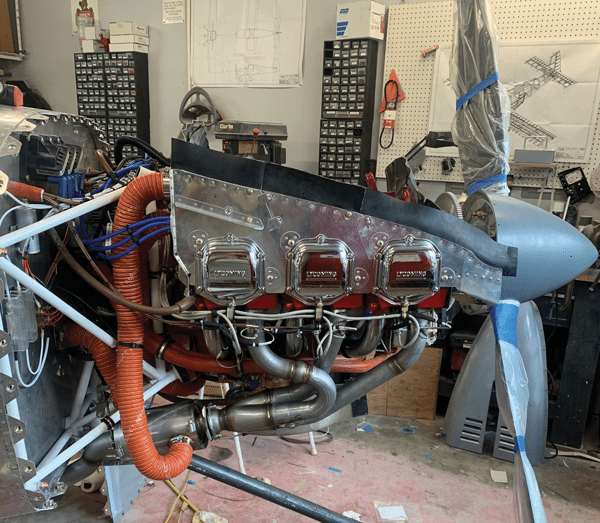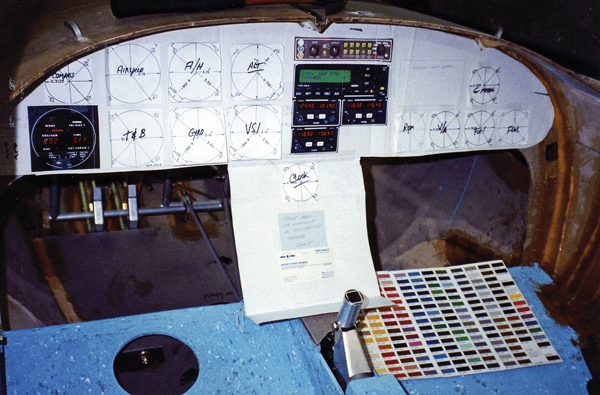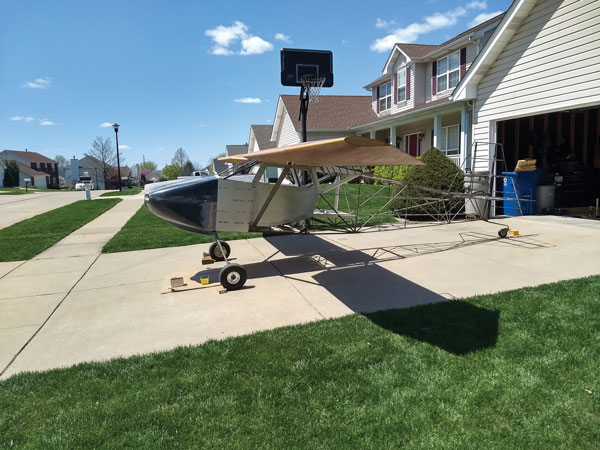
By Steve Lutte, EAA Lifetime 712183
This piece originally ran in the December 2023 issue of EAA Sport Aviation magazine.
The first kit airplane I built was an RV-7. It took a long seven years. This RV-10 took 30 months. I attribute the short build time to a few things. First, I ordered the whole kit, which was a quick-build kit, all at once. The only thing I left out was the engine, prop, interior, and avionics. Second, I didn’t have to learn the basic skills of building a Van’s aircraft. The RV-7, which was a standard slow-build kit, taught me a lot about how to organize things and commit a certain amount of time each week to the build. And lastly, I was in a little personal competition with my great friend and mentor Joe Waltz, EAA 583321, who built his RV-10 in 24 months. Joe, our EAA Chapter 302 president, started his build about a year before and was a tremendous help because he would run into various decision points that gave great insight as to the direction I should go, including advice such as where to mount the oxygen tank or the best way to install the overhead console.
Some incredible things have happened to me because of building an airplane. I don’t mean in a material sense. I mean building an airplane taught me to focus, take my time, and follow directions. At times it felt overwhelming, but slow and steady work prevailed. I have heard people say they don’t have the patience to build an airplane. To which I reply, “Neither did I before I started.” I have also met some incredible people and made some lifelong friends along the way. Building an airplane is not a one-person job either. There is a lot of support out there if you know where to look. EAA has technical counselors, and the support from the manufacturer is fantastic. I would add a bit of caution when using the internet. Some advice may not conform to the standards that should be held when building an airplane. Sure that 20-year-old grease you had in the garage might be fine for your lawn mower, but it should not be used for your airplane’s wheel bearings. When I’m in doubt, I head to the manufacturer first.

I chose a Thunderbolt IO-540 for the powerplant and a two-bladed Hartzell blended airfoil prop. I put the Electroair ignition on the right side and a mag on the left. I found I get really smooth performance operating at peak exhaust gas temperature, cruising in the low to mid teens. The performance numbers are spot on with what Van’s published. I tried to do as much as I could myself. I designed the electrical system with redundancy in mind. I have two complete electrical systems, two batteries, two alternators, and two main buses. Both normally work separately from each other, but they are bridged together with two diodes. The buses operate at slightly different voltages so they remain separated. A failure of main Bus No. 2 is no big deal; Bus No. 1 immediately picks up the slack automatically. A failure of main Bus No. 1 results in Bus No. 2 taking care of the essentials, shedding the high-load items such as the air conditioning and landing lights. I also did the engraved labeling with a little CNC engraver I found online. This took a little time as the instructions were in Chinese. After a lot of trial and error, I ended up engraving the back side of black-painted plexiglass in a mirror image. Then I painted white over the engraving, which gave 3D lettering on the front side. I had to do the instrument panel in sections due to the size limitations of the engraver.

I built both airplanes at home and then took them to the airport with only the wings left to be attached. When I built the RV-7, I intended to paint it myself from the start. I did this in sections piece by piece, and when I put the wings on it was ready to go. With the RV-10, I was planning to have it painted after Phase I was complete. After the test phase was done, I learned that either I wait two-plus years for a paint job or do it myself, so I did it myself. I decided to not have a curved line in the paint scheme. I had to paint the airplane in sections because it was just too complicated for me to do all at once. There are five different colors, one of which is metallic ghosting only visible in direct sunlight. It was all topped with three coats of clear.

I was honored to receive a Bronze Lindy Award for the RV-10 at EAA AirVenture Oshkosh 2023. I’ve been asked many times what I’m going to do now that the airplane is done. I have been looking around a little. Van’s has a high-wing coming out that looks interesting. A jet would be fun, too. For the near future, though, I think I would just like to fly.
Attention — Aircraft Builders and Restorers
We would love to share your story with your fellow EAA members in the pages of EAA Sport Aviation magazine, even if it’s a project that’s been completed for a while. Readers consistently rate the “What Our Members are Building/Restoring” section of the magazine as one of their favorites, so don’t miss the chance to show off your handiwork and inspire your peers to start or complete projects of their own. Learn more ->
Post Comments




